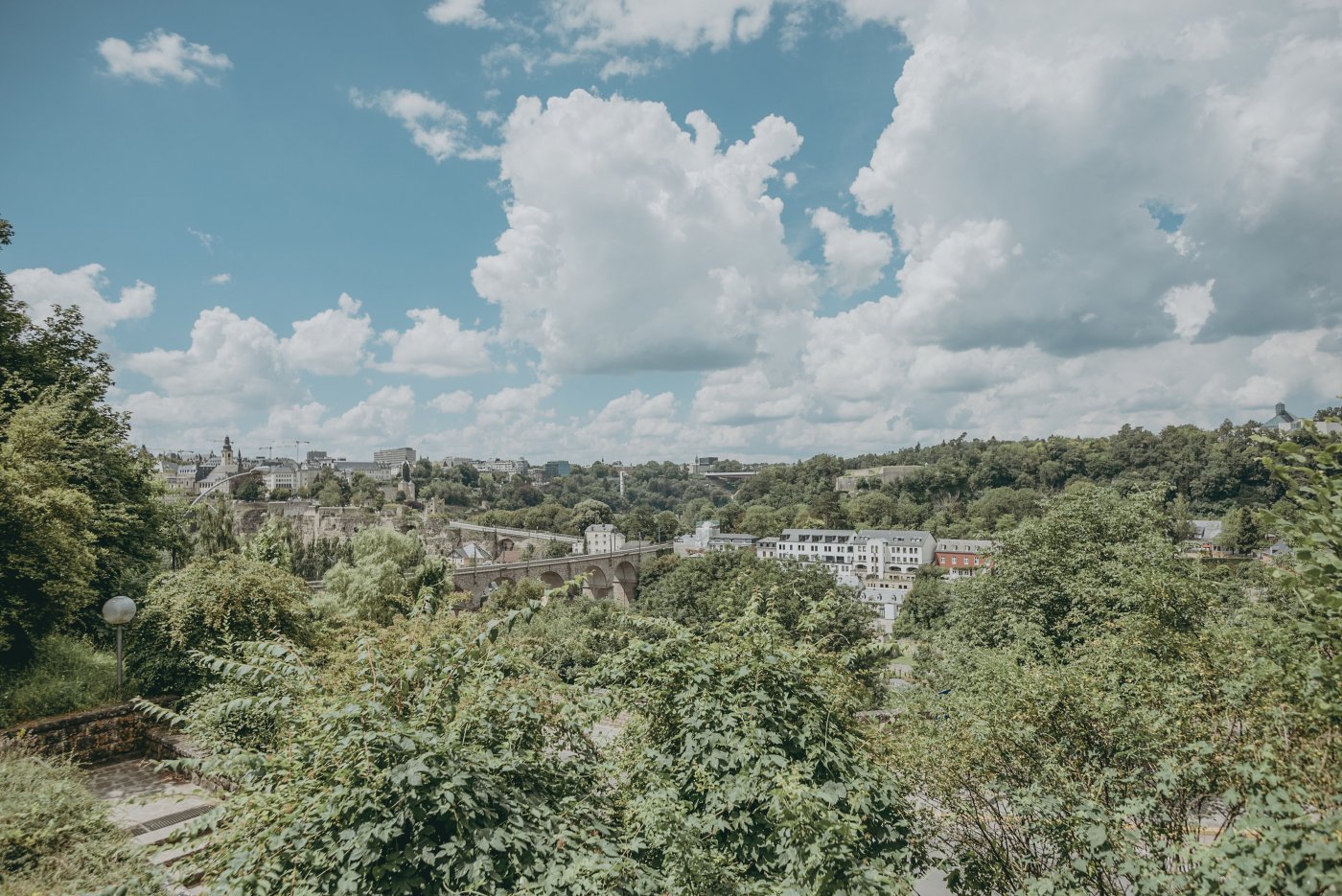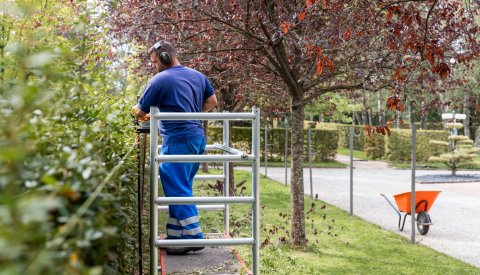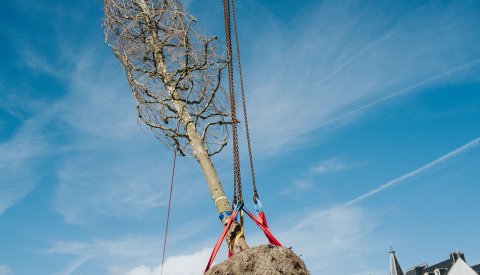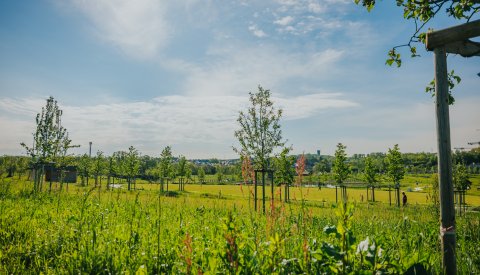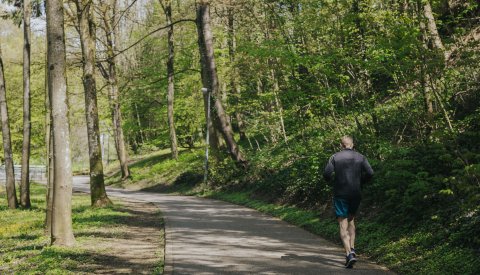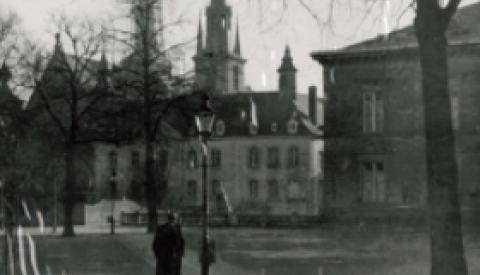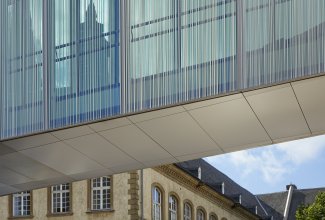Overview
A simple tree register provides information on the tree population, listing names and numbers. But the requirements for such a system go way beyond just providing information. With its large tree population, the City of Luxembourg has to maintain a full tree register.
A tree's master data provides information on the following: location, district, unique number and the person entering the data, plus tree species, crown diameter, trunk circumference, height and year of planting.
Tree register
View the interactive map at maps.vdl.lu
Open mapRemarkable trees
View the interactive map at maps.vdl.lu
Open mapTree inspections and care
During tree inspections, especially as part of road safety inspections, any signs of damage and any measures are recorded. The general condition of the tree, the crown, the trunk, the base of the trunk and the roots are all examined. Any damages are identified and the necessary measures and follow-up checks scheduled according to urgency. Incomplete measures can be selected in the program according to technical criteria and assigned as a to-do.
Trees and tree register unit
The Trees – Tree Care and Tree Register unit is part of the Service Parcs (Parks Department). This team is made up of a department manager and two register managers who carry out all administrative work, as well as tree inspections. They also work together with the district teams in the North/Central/South sectors to process the list of requested fellings and requests for proposals from local tree nurseries for replenishing trees or selecting new tree varieties for new projects.Did you know? The Service Parcs employees responsible for tree inspection are "FLL-certified tree inspectors". They receive this certification after successfully completing further training in this field!
Road safety
With the introduction of the tree register, which helped make tree inspections more efficient and improved the monitoring of the number and condition of trees, the decision was also taken to apply the FLL tree inspection guidelines.
During tree inspections, any work that has to be undertaken is recorded for each tree under "Maintenance" according to a list of measures and the measure is assigned a priority.
All maintenance measures and pending regular checks can be filtered by name, date and priority. These filter lists, showing pending work, are used for weekly planning with the maintenance teams.
Figures
The updates cover both felling and replanting. However, maintaining the register is an ongoing process and electronic data entry can take up to 6 months.
| District | Number |
|---|---|
| Belair-Rollingergrund | 2,351 |
| Limpertsberg | 1,893 |
| Bonnevoie – Kaltreis | 1,785 |
| Merl - Hollerich | 1,779 |
| Gasperich | 1,572 |
| Dommeldange - Weimerskirch - Kirchberg | 1,478 |
| Cessange | 1,424 |
| Pfaffenthal - Neudorf - Clausen | 1,413 |
| Mühlenbach-Beggen - Eich | 1,380 |
| Municipal Park | 1,374 |
| Bonnevoie - Verlorenkost - Hamm | 1,337 |
| Cents | 1,282 |
| Gare | 755 |
| Pétrusse | 605 |
| Ban de Gasperich Park | 564 |
| City centre | 501 |
| Kockelscheuer | 454 |
| Parc T. Neuman | 373 |
| Merl Park | 356 |
| Ban de Gasperich | 175 |
Number of trees per district: 23,126 (275 not attributed to any particular district)
The tree register currently lists 9,275 street trees, 2,071 trees in playgrounds and schoolyards, 7,914 trees in parks and green spaces, and 3,866 trees that are in public spaces or on municipal land and are maintained by the City.
Did you know? In 2016, there were 19,914 trees in Luxembourg City!
Subdivision based on location
In the tree register, trees are assigned different functions based on their location. Trees in school playgrounds and other play areas, for example, undergo thorough inspections every year; in school playgrounds during the summer holidays from 15 July to 15 September, and in play areas in spring and/or autumn, depending on their condition and notes from the previous inspection.
Tree species
There are 190 different tree genera (of which over 5 trees are included in the register) across the city. Maple trees (Acer; Sapindaceae), limes (Tilia; Malvaceae), oaks (Quercus; Fagaceae), ash trees (Fraxinus; Oleaceae) and sycamores (Platanus; Platanaceae) are the most common genera in the tree register by number.
Tree varieties
Requirements for street trees
Street trees have the greatest potential for conflict and the greatest accumulation of stress factors. They are exposed to extreme heat and drought factors, and the sun's rays are also more intense, resulting in burns to the upper canopy.
Sealed surfaces, in particular, with their tarred and dark to black surfaces, cause additional problems for the undersides of leaves with their hot radiant heat.
Looking at historical pictures, you can see that on many streets and squares, the trees were taller than they are nowadays. This is due to roads' underground structure today. In the past, tree roots could reach further into the ground as there were fewer pipes and the soil was far less compacted. Even if this has have negative consequences, such as roots "invading" entire underground infrastructure lines, a requirement for all underground lines was introduced several decades ago which states that: gas, water and sewage pipelines, as well as electricity, postal and internet connections, are laid in the ground.
Trees planted along roads, pavements and public squares are exposed to many negative influences, such as the water storage capacity of soils and their oxygen supply, road gritting, soil compaction and sealing, high pH values, vandalism, and damage caused by cars and construction machinery on building sites.
In the last ten years, however, it has gradually become accepted that tree pits should be enlarged underground (greater soil volume in terms of both width and depth), special substrates should be added that are conducive to root growth, and all necessary maintenance measures should be implemented, as explained in the following chapters.
Since 2005, the aim has been to increase the diversity of tree species in the city. Tree planting has been consistently planned for all existing and all new residential streets, as well as for green spaces, in order to continue increasing the number of trees.
The question of whether these species are native or non-native is less important in this regard.
